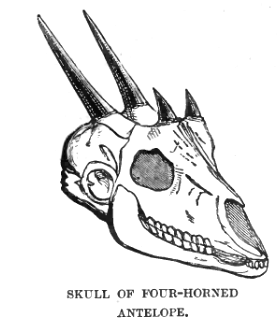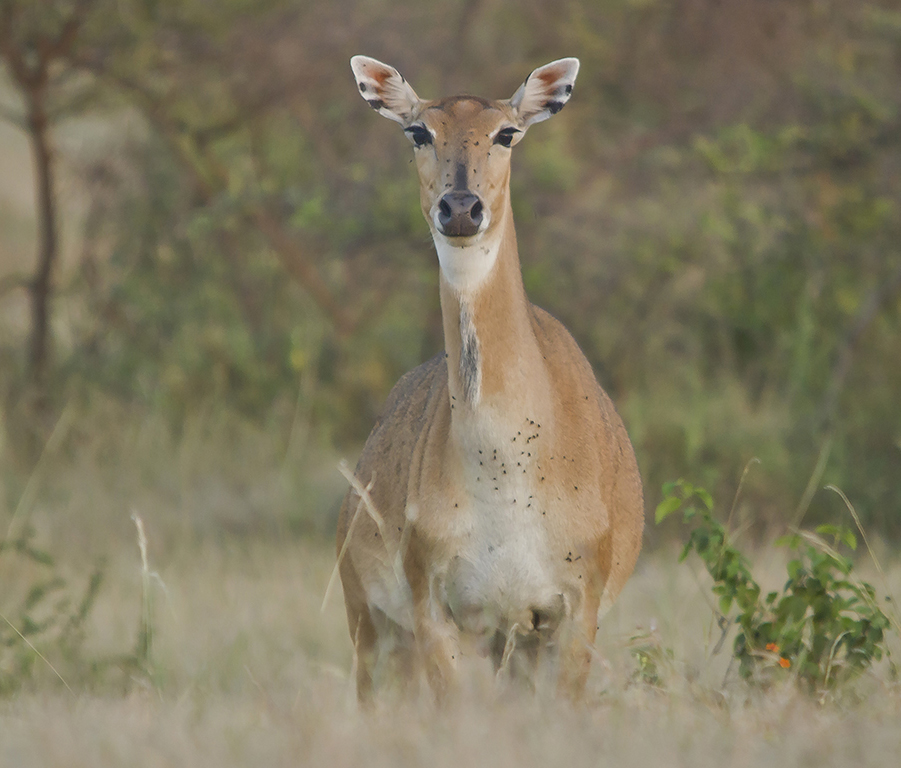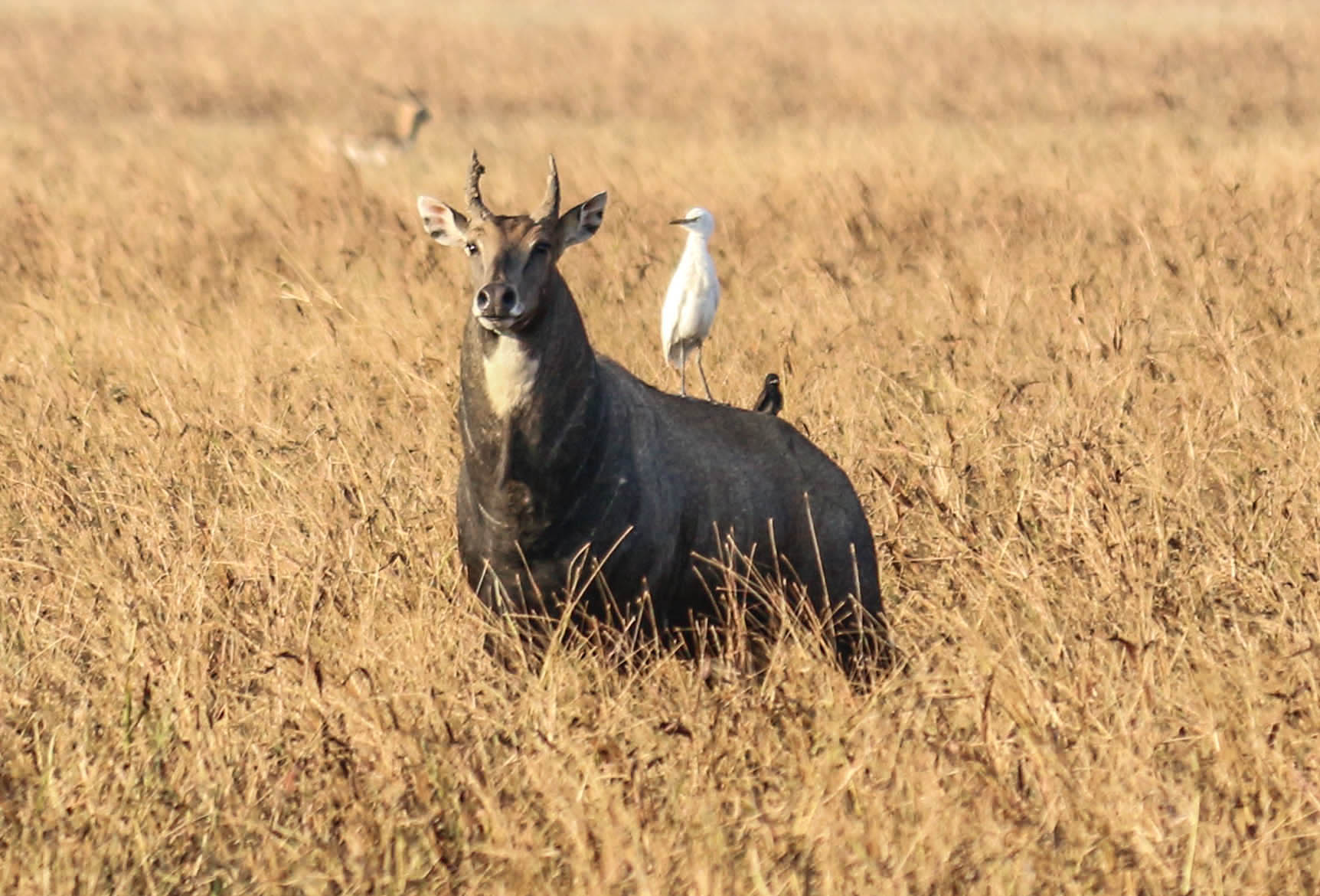|
Boselaphini
Boselaphini is a tribe of bovines. It contains only two extant genera, each with a single extant species. Description The Boselaphini or four-horned antelope tribe are the last survivors of a form very similar to that of the ancestors of the broader subfamily. The oldest fossil members of the tribe, such as ''Eotragus'', date to the Miocene about 18 to 20 million years ago. Such fossils possessed horns very similar to those of males belonging to the two living species, although in some cases, they were also present in females. Both extant species have relatively primitive anatomical and behavioural characteristics and the females have no horns. They are native to the rapidly diminishing forests of India, and tend to avoid open plains. The nilgai has been introduced into southern Texas where a population of a little under 15,000 animals provides some long-term insurance for its survival. Genera Extant species Phylogeny The following are the genera classified under the tribe. G ... [...More Info...] [...Related Items...] OR: [Wikipedia] [Google] [Baidu] |
Nilgai
The nilgai (''Boselaphus tragocamelus'') (, literally meaning "blue cow") is the largest Asian antelope and is ubiquitous across the northern Indian subcontinent. It is the sole member of the genus ''Boselaphus'' and was described by Peter Simon Pallas in 1766. The nilgai stands at the shoulder; males weigh , and the lighter females . A sturdy thin-legged antelope, the nilgai is characterised by a sloping back, a deep neck with a white patch on the throat, a short crest of hair along the neck terminating in a tuft, and white facial spots. A column of pendant coarse hair hangs from the dewlap ridge below the white patch. Sexual dimorphism is prominent – while females and juveniles are orange to tawny, adult males have a bluish-grey coat. Only males possess horns, long. The nilgai is diurnal (active mainly during the day). The animals band together in three distinct kinds of groups: one or two females with young calves, three to six adult and yearling females with calves, a ... [...More Info...] [...Related Items...] OR: [Wikipedia] [Google] [Baidu] |
Four-horned Antelope
The four-horned antelope (''Tetracerus quadricornis''), or ''chousingha'', is a small antelope found in India and Nepal. Its four horns distinguish it from most other bovids, which have two horns (with a few exceptions, such as the Jacob sheep). The sole member of the genus ''Tetracerus'', the species was first described by French zoologist Henri Marie Ducrotay de Blainville in 1816. Three subspecies are recognised. The four-horned antelope stands nearly at the shoulder and weighs nearly . Slender with thin legs and a short tail, the four-horned antelope has a yellowish brown to reddish coat. One pair of horns is located between the ears, and the other on the forehead. The posterior horns are always longer than the anterior horns, which might be mere fur-covered studs. While the posterior horns measure , the anterior ones are long. The four-horned antelope is diurnal (active mainly during the day). Though solitary by nature, four-horned antelopes may form loose groups of th ... [...More Info...] [...Related Items...] OR: [Wikipedia] [Google] [Baidu] |
Boselaphus Tragocamelus
The nilgai (''Boselaphus tragocamelus'') (, literally meaning "blue cow") is the largest Asian antelope and is ubiquitous across the northern Indian subcontinent. It is the sole member of the genus ''Boselaphus'' and was described by Peter Simon Pallas in 1766. The nilgai stands at the shoulder; males weigh , and the lighter females . A sturdy thin-legged antelope, the nilgai is characterised by a sloping back, a deep neck with a white patch on the throat, a short crest of hair along the neck terminating in a tuft, and white facial spots. A column of pendant coarse hair hangs from the dewlap ridge below the white patch. Sexual dimorphism is prominent – while females and juveniles are orange to tawny, adult males have a bluish-grey coat. Only males possess horns, long. The nilgai is diurnal (active mainly during the day). The animals band together in three distinct kinds of groups: one or two females with young calves, three to six adult and yearling females with calves, an ... [...More Info...] [...Related Items...] OR: [Wikipedia] [Google] [Baidu] |
Four-horned Antelope
The four-horned antelope (''Tetracerus quadricornis''), or ''chousingha'', is a small antelope found in India and Nepal. Its four horns distinguish it from most other bovids, which have two horns (with a few exceptions, such as the Jacob sheep). The sole member of the genus ''Tetracerus'', the species was first described by French zoologist Henri Marie Ducrotay de Blainville in 1816. Three subspecies are recognised. The four-horned antelope stands nearly at the shoulder and weighs nearly . Slender with thin legs and a short tail, the four-horned antelope has a yellowish brown to reddish coat. One pair of horns is located between the ears, and the other on the forehead. The posterior horns are always longer than the anterior horns, which might be mere fur-covered studs. While the posterior horns measure , the anterior ones are long. The four-horned antelope is diurnal (active mainly during the day). Though solitary by nature, four-horned antelopes may form loose groups of thr ... [...More Info...] [...Related Items...] OR: [Wikipedia] [Google] [Baidu] |
Nilgai (Boselaphus Tragocamelus) Male
The nilgai (''Boselaphus tragocamelus'') (, literally meaning "blue cow") is the largest Asian antelope and is ubiquitous across the northern Indian subcontinent. It is the sole member of the genus ''Boselaphus'' and was described by Peter Simon Pallas in 1766. The nilgai stands at the shoulder; males weigh , and the lighter females . A sturdy thin-legged antelope, the nilgai is characterised by a sloping back, a deep neck with a white patch on the throat, a short crest of hair along the neck terminating in a tuft, and white facial spots. A column of pendant coarse hair hangs from the dewlap ridge below the white patch. Sexual dimorphism is prominent – while females and juveniles are orange to tawny, adult males have a bluish-grey coat. Only males possess horns, long. The nilgai is diurnal (active mainly during the day). The animals band together in three distinct kinds of groups: one or two females with young calves, three to six adult and yearling females with calves, an ... [...More Info...] [...Related Items...] OR: [Wikipedia] [Google] [Baidu] |
Nilgai
The nilgai (''Boselaphus tragocamelus'') (, literally meaning "blue cow") is the largest Asian antelope and is ubiquitous across the northern Indian subcontinent. It is the sole member of the genus ''Boselaphus'' and was described by Peter Simon Pallas in 1766. The nilgai stands at the shoulder; males weigh , and the lighter females . A sturdy thin-legged antelope, the nilgai is characterised by a sloping back, a deep neck with a white patch on the throat, a short crest of hair along the neck terminating in a tuft, and white facial spots. A column of pendant coarse hair hangs from the dewlap ridge below the white patch. Sexual dimorphism is prominent – while females and juveniles are orange to tawny, adult males have a bluish-grey coat. Only males possess horns, long. The nilgai is diurnal (active mainly during the day). The animals band together in three distinct kinds of groups: one or two females with young calves, three to six adult and yearling females with calves, a ... [...More Info...] [...Related Items...] OR: [Wikipedia] [Google] [Baidu] |
Tetracerus
The four-horned antelope (''Tetracerus quadricornis''), or ''chousingha'', is a small antelope found in India and Nepal. Its four horns distinguish it from most other bovids, which have two horns (with a few exceptions, such as the Jacob sheep). The sole member of the genus ''Tetracerus'', the species was first described by French zoologist Henri Marie Ducrotay de Blainville in 1816. Three subspecies are recognised. The four-horned antelope stands nearly at the shoulder and weighs nearly . Slender with thin legs and a short tail, the four-horned antelope has a yellowish brown to reddish coat. One pair of horns is located between the ears, and the other on the forehead. The posterior horns are always longer than the anterior horns, which might be mere fur-covered studs. While the posterior horns measure , the anterior ones are long. The four-horned antelope is diurnal (active mainly during the day). Though solitary by nature, four-horned antelopes may form loose groups of th ... [...More Info...] [...Related Items...] OR: [Wikipedia] [Google] [Baidu] |
Bovinae
Bovines (subfamily Bovinae) comprise a diverse group of 10 genera of medium to large-sized ungulates, including cattle, bison, African buffalo, water buffalos, and the four-horned and spiral-horned antelopes. The evolutionary relationship between the members of the group is still debated, and their classification into loose tribes rather than formal subgroups reflects this uncertainty. General characteristics include cloven hooves and usually at least one of the sexes of a species having true horns. The largest extant bovine is the gaur. In many countries, bovid milk and meat Meat is animal flesh that is eaten as food. Humans have hunted, farmed, and scavenged animals for meat since prehistoric times. The establishment of settlements in the Neolithic Revolution allowed the domestication of animals such as chic ... is used as food by humans. Cattle are kept as livestock almost everywhere except in parts of India and Nepal, where they are Cattle in religion and mytholog ... [...More Info...] [...Related Items...] OR: [Wikipedia] [Google] [Baidu] |
Miotragocerus
''Miotragocerus'', also known as the European eland, is an extinct species of antelope that once lived in Europe in 10 to 8 million years ago. They were most likely browsers Browse, browser or browsing may refer to: Programs * Web browser, a program used to access the World Wide Web *Code browser, a program for navigating source code * File browser or file manager, a program used to manage files and related objects * ..., according to their fossilized teeth and jaw shape. They were likely to have lived near bodies of water, such as many antelope species today. References {{Taxonbar, from=Q15041548 Fossil taxa described in 1928 Extinct mammals of Europe Bovines ... [...More Info...] [...Related Items...] OR: [Wikipedia] [Google] [Baidu] |
Antelope
The term antelope is used to refer to many species of even-toed ruminant that are indigenous to various regions in Africa and Eurasia. Antelope comprise a wastebasket taxon defined as any of numerous Old World grazing and browsing hoofed mammals belonging to the family Bovidae of the order Artiodactyla. A stricter definition, also known as the "true antelopes," includes only the genera ''Gazella'', ''Nanger'', ''Eudorcas'' and ''Antilope''. One North American species, the pronghorn, is colloquially referred to as the "American antelope," but it belongs to a different family from the African and Eurasian antelopes. A group of antelope is called a herd. Unlike deer antlers, which are shed and grown annually, antelope horns grow continuously. Etymology The English word "antelope" first appeared in 1417 and is derived from the Old French ''antelop'', itself derived from Medieval Latin ''ant(h)alopus'', which in turn comes from the Byzantine Greek word ἀνθόλοψ, ''anthó ... [...More Info...] [...Related Items...] OR: [Wikipedia] [Google] [Baidu] |
Eotragus
''Eotragus'' is an extinct genus of early bovid. Species belonging to the genus inhabited Europe, Africa, and Asia during the Miocene some 20-18 million years ago. It is related to the modern nilgai and four-horned antelope. It was small and probably lived in woodland A woodland () is, in the broad sense, land covered with trees, or in a narrow sense, synonymous with wood (or in the U.S., the ''plurale tantum'' woods), a low-density forest forming open habitats with plenty of sunlight and limited shade (se ... environments. External linksBovidae: Bovinae: Boselaphini Prehistoric bovids Miocene even-toed un ... [...More Info...] [...Related Items...] OR: [Wikipedia] [Google] [Baidu] |
Boselaphus
''Boselaphus'' is a genus of bovid. The nilgai is the sole living representative, although one other species is known from the fossil record. The nilgai along with the four-horned antelope are the only living members of the tribe Boselaphini Boselaphini is a tribe of bovines. It contains only two extant genera, each with a single extant species. Description The Boselaphini or four-horned antelope tribe are the last survivors of a form very similar to that of the ancestors of the bro .... References {{Taxonbar, from=Q10740872 Mammal genera Mammal genera with one living species Taxa named by Henri Marie Ducrotay de Blainville Bovines ... [...More Info...] [...Related Items...] OR: [Wikipedia] [Google] [Baidu] |
_male.jpg)









